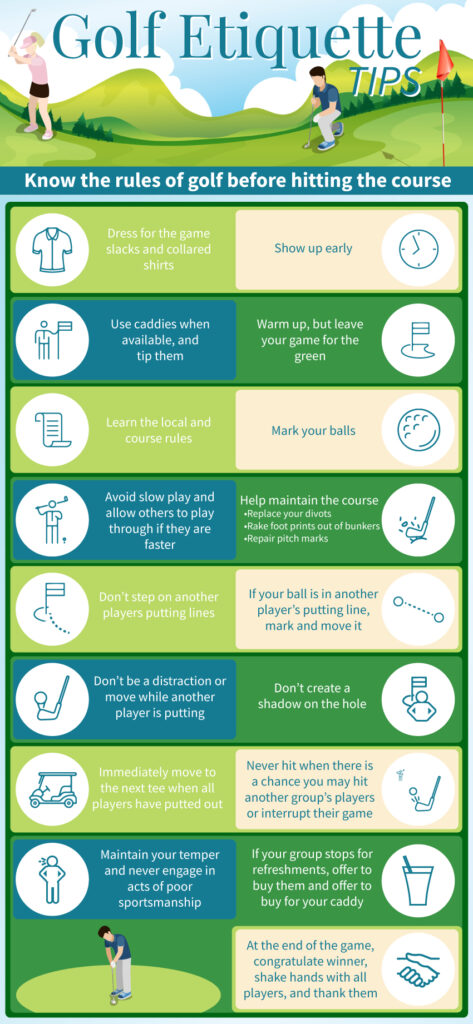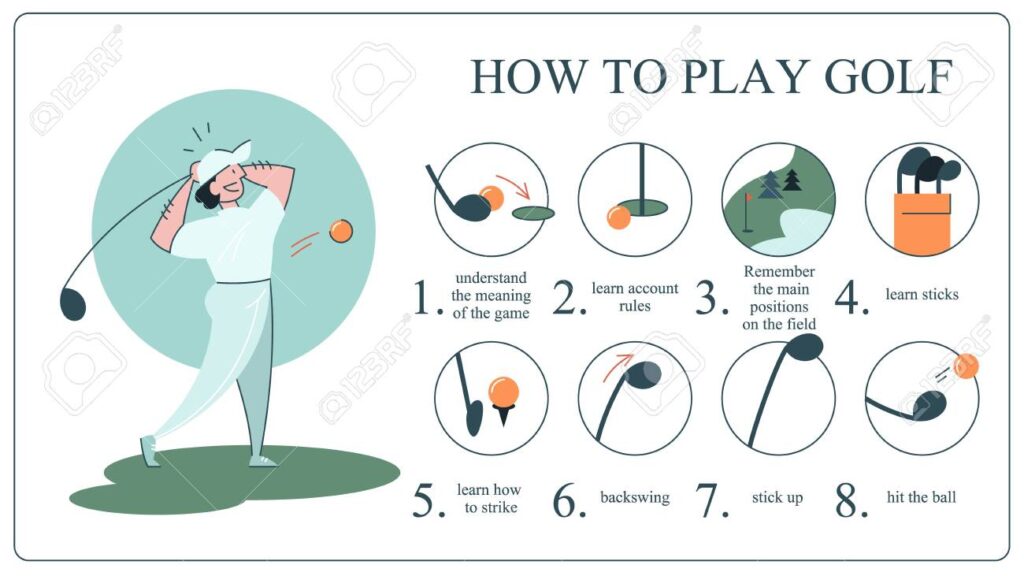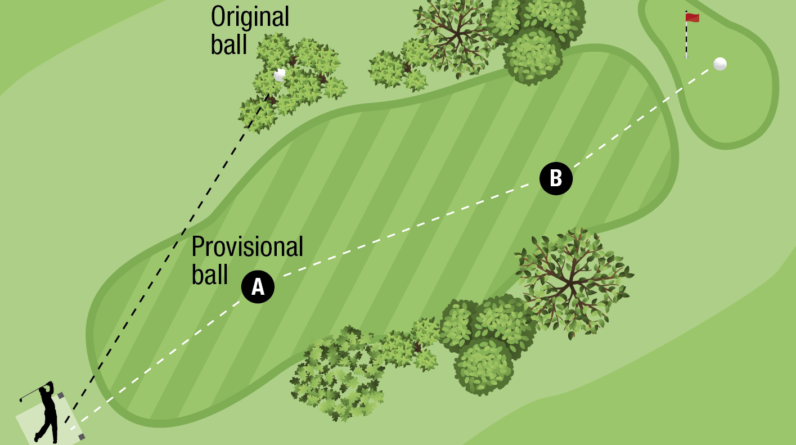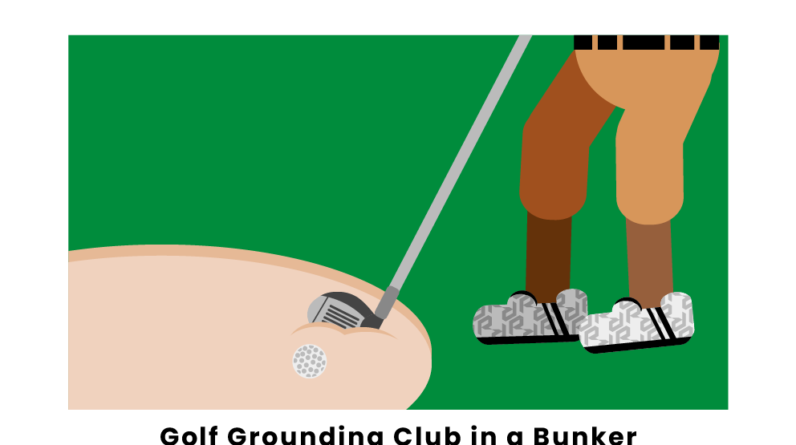Whether you’re a seasoned golfer or just starting out, understanding the basic rules of golf is essential to enjoying this classic sport. From tee to green, this article will guide you through the fundamental principles that govern the game. Exploring everything from etiquette on the course to penalty rules, you’ll gain a comprehensive understanding of what it takes to play golf like a pro. So, grab your clubs and let’s tee off into the world of golf rules!
Etiquette
Respect for the Course and Players
When it comes to playing golf, respect for the course and your fellow players is essential. Treat the golf course with care and ensure that you adhere to any rules and regulations set by the management. Avoid damaging the greens, fairways, and tees by avoiding unnecessary divots or practicing proper repair techniques. In addition, show courtesy to other players by keeping noise to a minimum, refraining from distracting behavior, and being aware of your pace of play.
Pace of Play
Maintaining an appropriate pace of play is crucial to ensure an enjoyable golfing experience for everyone involved. Always be aware of the groups ahead of you and keep up with their pace, but avoid rushing and sacrificing the quality of your shots. If you fall behind, allow faster groups to play through to maintain the flow of the game. Remember, a steady and efficient pace of play not only keeps everyone engaged but also promotes a positive atmosphere on the course.
Silence and Distractions
In order to foster a focused and respectful environment while playing golf, it is important to avoid unnecessary noise and distractions. When another player is preparing to swing or putt, stay quiet and still to allow them to concentrate fully. This includes refraining from talking loudly, using electronic devices, or engaging in any disruptive behavior. By showing consideration for others, you not only enhance their experience but also improve your own focus and performance on the course.
Equipment
Golf Clubs
Having the appropriate set of golf clubs is crucial for playing the game effectively. Golf clubs come in various types, including drivers, irons, wedges, and putters, each serving a specific purpose. Invest in clubs that suit your skill level and playing style. Take the time to learn about the different club specifications, such as shaft flex, loft angles, and grip size, as they can greatly impact your performance on the course. Regularly inspect and maintain your clubs to ensure they remain in top condition.
Golf Ball
Selecting the right golf ball can greatly affect your game. Golf balls are available in different constructions and compression levels, which can influence distance, spin, and feel. Consider factors such as swing speed, skill level, and personal preferences when choosing a golf ball. It is also important to adhere to any ball regulations specified by the course you are playing on. Keep an adequate supply of golf balls in your bag to avoid running out during a round.
Golf Bag
A golf bag is an essential piece of equipment that enables you to carry and transport your clubs, balls, tees, and other golfing accessories. Choose a bag that is comfortable to carry or maneuver, depending on your preference. Golf bags come in various styles, including stand bags, cart bags, and staff bags, each offering unique features and functionality. Keep your golf bag organized to easily access your clubs and equipment during a round.
Tees
Golf tees are used to elevate the golf ball off the ground for the tee shot. They come in different materials, lengths, and styles. When selecting tees, consider the type of club you will be using and the desired tee height. It is important to place your tee in a consistent manner to ensure a level playing field throughout the round. Carry an adequate number of tees in your bag to avoid interruptions or delays during play.

Course
Tee Box
The tee box is the designated area where each hole begins. It typically includes markers indicating different tee positions, allowing players to choose the appropriate difficulty level based on their skill level. When playing from the teeing ground, make sure to position yourself within the designated markers. Maintain respectful behavior by avoiding unnecessary damage to the tee box and following any instructions or rules provided by the course.
Fairway
The fairway is the well-manicured portion of the course that leads from the tee box to the green. It provides a clear and open pathway for golfers to take their shots. When hitting from the fairway, take care not to damage the turf and ensure that you replace any divots made during your swing. Keeping the fairway in good condition benefits all players and contributes to an aesthetically pleasing golf course.
Rough
The rough refers to the areas on the course that are intentionally left longer and thicker than the fairway. It presents a greater challenge for golfers due to the increased difficulty in making clean contact with the ball. When playing from the rough, take extra care to ensure a solid strike and consider adjusting your club selection accordingly. Avoid trampling down the rough and leaving unnecessary damage behind.
Bunker
Bunkers, also known as sand traps, are hazards filled with sand that are strategically placed throughout the course. When your ball lands in a bunker, you must navigate the sandy terrain to get it back on the fairway or green. Use appropriate techniques, such as open-faced clubfaces and a smooth swing, to escape the bunker effectively. After playing your shot, make sure to rake the bunker and restore it to its original condition for the benefit of other players.
Green
The green is the final destination for each hole and is where the flagstick and hole are located. Greens are carefully maintained to provide a smooth putting surface. When on the green, be mindful of your footsteps and avoid walking in the line of play of other players. Repair any divots made by your ball or spike marks caused by your shoes to ensure the green remains flat and in good condition for subsequent players.
Hazard
Hazardous areas on the golf course, such as water hazards and dense forests, pose challenges to players. It is important to recognize and avoid these areas whenever possible to minimize penalties and risks. If your ball lands in a hazard, assess your options and consider taking the appropriate penalty under the rules of golf. Being aware of the hazards on the course will help you strategize your shots and avoid unnecessary penalties.
Scoring
Stroke Play
Stroke play is the most common scoring system in golf, where the total number of strokes taken throughout the round determines the final score. Each time you swing at the ball counts as a stroke, and the objective is to complete the course with the fewest strokes possible. The player with the lowest total score at the end of the round is declared the winner. Stroke play offers a fair and comprehensive way to compete against others or simply track your progress.
Match Play
In match play, the focus is on winning individual holes rather than the total number of strokes. Each hole is treated as a separate competition, and the player or team that wins the most holes is victorious. Match play allows for more strategic decision-making and emphasizes the importance of winning key shots. It can be played individually or in teams and offers a different dynamic compared to stroke play.
Stableford System
The Stableford system is a scoring system that assigns points based on the number of strokes taken on each hole. Players earn points for achieving specific scores, such as a birdie or par, and lose points for scoring above a certain threshold. The purpose of this system is to reward skillful play and encourage aggressive play on certain holes. It can be a fun and engaging alternative to traditional stroke play, particularly in a more casual setting.
Handicap System
The handicap system is designed to level the playing field by allowing players of different skill levels to compete against each other fairly. Each player is assigned a handicap index, which represents their playing ability. Handicaps are used to adjust a player’s score by deducting strokes based on the difficulty of the course. This system creates a more equitable competition and enables players of varying skill levels to enjoy the game together.

The Tee Shot
Teeing Ground
The teeing ground, also known as the tee box, is where each hole begins. It is marked by tee markers and provides a designated area for players to take their first shot of the hole. When teeing off, position yourself within the designated markers and ensure that your ball is teed up at the appropriate height. Understanding the rules and regulations regarding the teeing ground will help you start each hole correctly.
Order of Play
The order of play is an important aspect of golf etiquette and fairness. The player who has the honor is the one who tees off first and is typically determined by the lowest score on the previous hole. After the initial order is established, subsequent shots are played in the order that players are farthest from the hole. Following the proper order of play ensures a smooth and efficient pace of play.
Penalties for Lost Ball
If your ball is lost during play, it is important to understand and adhere to the penalties associated with it. In stroke play, losing a ball incurs a penalty of one stroke, and you must play your next shot from the spot where the previous stroke was made. In match play, the loss of a hole is the penalty for losing a ball. Taking appropriate measures, such as using brightly colored balls or taking note of landmarks, can help minimize the risk of losing a ball.
Playing the Ball
Hitting the Ball
When hitting the ball, focus on making a smooth and controlled swing that allows for solid contact. Keep your eye on the ball throughout your swing and maintain a balanced and athletic posture. Proper grip, stance, and alignment are also crucial in achieving consistent and accurate shots. Regular practice and lessons can help improve your technique and ensure a more enjoyable golfing experience.
Unplayable Lie
An unplayable lie occurs when your ball comes to rest in a difficult or undesirable position, such as in thick rough or in an obstructed area. In such cases, you have several options under the rules of golf. You can take a penalty stroke and drop the ball within two club lengths of where it lay, or you may choose to return to the spot where the previous shot was played and strike another ball. Understanding the rules governing unplayable lies will help you navigate challenging situations effectively.
Out of Bounds
If your ball crosses the boundary of the golf course, it is considered out of bounds. Out of bounds areas are usually marked by white stakes or fence lines. When a ball is out of bounds, you must take a penalty stroke and replay the shot from the original position or another designated area. Accurate and controlled shots can help reduce the risk of your ball going out of bounds and incurring penalties.

Putting
Green Reading
Reading the green is a fundamental skill in putting and involves assessing the slope, contours, and speed of the putting surface. Take the time to observe the green from different angles and pay attention to any visual cues, such as grass patterns or shadows. Visualize the path your ball will take and make adjustments accordingly. Regular practice and familiarity with different types of greens will enhance your ability to read them accurately.
Improving Line of Play
To improve your line of play and increase your chances of sinking putts, it is important to take into consideration any potential obstacles or breaks on the green. Observe the terrain around the hole to identify any slopes or subtle breaks that may affect the roll of the ball. Align your putter face and body position accordingly to ensure an accurate stroke. Developing a feel for the greens and trusting your instincts will help you make better decisions on the green.
Ball at Rest Moved
If your ball at rest is accidentally moved on the green, there are rules in place to address the situation. If the movement is caused by you or your equipment, you must replace the ball in its original position without penalty. However, if the ball was moved by an outside agency, such as wind or another player’s ball, you generally play the ball from its new position without penalty. Understanding the rules concerning a moved ball will help you make the appropriate decisions on the green.
Obstructions and Interference
Intentional Obstructions
Intentional obstructions placed on the golf course, such as temporary fencing or maintenance equipment, are considered to be part of the course design. These obstructions cannot be moved or altered by players unless authorized by the rules or management. When faced with intentional obstructions, adjust your shot selection and strategy accordingly. Avoid interfering with or damaging these obstructions, as they are an integral part of the course setup.
Interference from Other Players
Interference from other players can occur during a round of golf, and it is important to know how to handle such situations. If another player’s ball interferes with your shot, you are generally entitled to relief. The rules provide options for dropping the ball near its original position or taking lateral relief. Clear communication and understanding of the rules among all players can help mitigate instances of interference and maintain a harmonious playing environment.

Water Hazards
Ball in Water Hazard
Water hazards are common obstacles on golf courses and are generally marked by yellow or red stakes or lines. If your ball comes to rest in a water hazard, you have several options for play. One option is to play the ball as it lies, which may be challenging depending on the location and depth of the water. Alternatively, you can take a penalty stroke and drop the ball within two club lengths of where it last crossed the margin of the hazard. Understanding your options in water hazard situations will help you make informed decisions on the course.
Penalty for Water Hazard
Failing to adhere to the rules and regulations regarding water hazards can result in penalties. In stroke play, if you hit a ball into a water hazard, you must take a penalty stroke and proceed according to the appropriate options. In match play, the penalty for hitting a ball into a water hazard depends on the specific rules agreed upon. Being aware of the penalties for water hazards and making informed decisions during play can help you navigate these situations effectively.
Out of Bounds
Ball Out of Bounds
When your ball crosses the boundary of the golf course and is deemed out of bounds, you must take the necessary steps to continue play within the rules. Determine where the ball crossed the boundary and establish a reference point. Take a penalty stroke and proceed to either play from the spot of the previous stroke or drop a ball within two club lengths of the reference point. Understanding the rules regarding out of bounds situations will help you manage them efficiently.
Stroke and Distance Penalty
When a ball is out of bounds or in a water hazard, taking relief may involve a penalty. The stroke and distance penalty is the most common penalty associated with these situations. It requires you to add one stroke to your score and replay the shot from a designated area. This penalty can be costly in terms of strokes and time spent on the course, so it is important to avoid situations that may result in out of bounds or water hazards whenever possible.
In conclusion, understanding and adhering to the basic rules and etiquette of golf is essential for an enjoyable and respectful experience on the course. By respecting the course and your fellow players, maintaining an appropriate pace of play, and minimizing distractions, you contribute to a positive environment for everyone involved. Using the correct equipment, including golf clubs, balls, bags, and tees, ensures that you are well-prepared for the game. Familiarity with different aspects of the course, such as tee boxes, fairways, roughs, bunkers, greens, and hazards, allows you to navigate them effectively. Scoring methods, such as stroke play, match play, the Stableford system, and the handicap system, provide different ways to compete and measure your progress. Proper execution of the tee shot, playing the ball from various lies, and putting techniques are essential skills to master. Understanding how obstructions and interferences can affect your game, as well as the penalties associated with water hazards and out of bounds situations, enables you to make informed decisions. By following these guidelines, you can enjoy the game of golf while maintaining a friendly and respectful atmosphere on the course.







